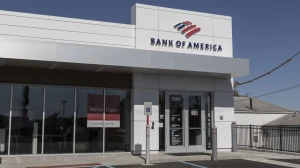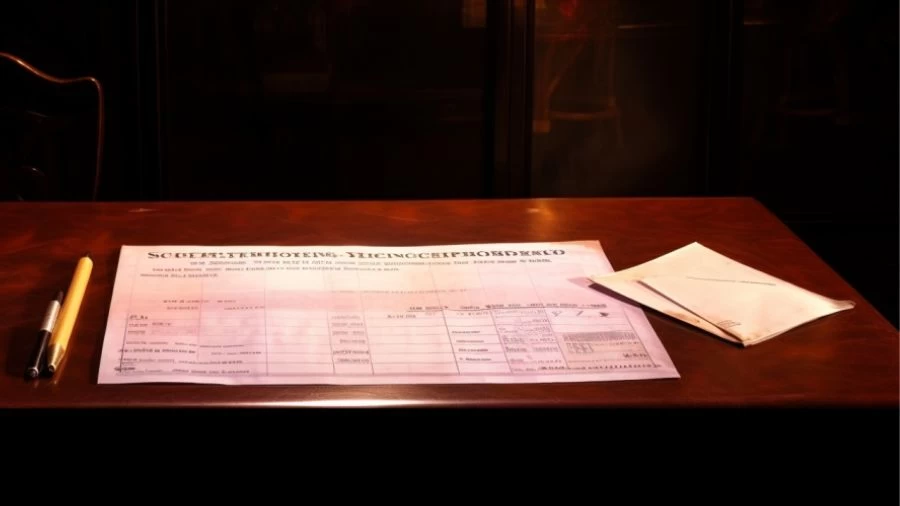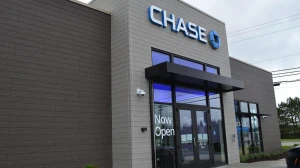
What Is Demand Deposit? What is an Example of a Demand Deposit?
A demand deposit, or DDA, enables instant fund withdrawal without prior notice, commonly found in checking and savings accounts, but typically offering limited interest, and insured by programs like the FDIC for protection.
by Sangamithra
Published Sep 07, 2023 | Updated Sep 07, 2023 | 📖 7 min read
What is a Demand Deposit?
A demand deposit, also known as a demand deposit account (DDA), refers to a bank account that allows depositors to withdraw their funds at any time without the need for advance notice. These accounts, which commonly include checking and savings accounts, provide immediate access to deposited funds and are designed to facilitate everyday transactions and expenses.
While demand deposit accounts may offer the convenience of readily available funds, they typically pay little to no interest, making them distinct from investment accounts. Joint ownership is often possible, and some banks may impose minimum balance requirements and fees, although many institutions now offer fee-free and no-minimum-balance options. Demand deposits constitute a substantial portion of the money supply, representing the most liquid assets within an economy.
What is an Example of a Demand Deposit?
A common example of a demand deposit is a regular checking account. In a checking account, individuals and businesses can deposit funds that are readily accessible for everyday financial transactions.
Account holders can easily withdraw money from their checking accounts through various means, such as checks, debit cards, online transfers, or in-person visits to the bank, without any penalties or the need for prior notice. Demand deposits like checking accounts provide a high level of liquidity and convenience, making them ideal for managing daily financial activities.
Why is It Called Demand Deposit?
A demand deposit is aptly named because it allows account holders to make withdrawals "on demand" without prior notice to the financial institution. Unlike term deposits, where funds are locked for a predetermined period, demand deposits, such as checking and savings accounts, provide immediate access to one's money.
This accessibility, without the need for advance notification, defines the core attribute of demand deposits, justifying their name as they cater to the immediate financial needs of account holders.
How do Demand Deposits Work?
Demand deposit accounts, often referred to as DDAs, are a fundamental banking tool that offers immediate access to your money without requiring advance notice. These accounts are designed for various everyday financial activities, such as paying bills, making purchases, and withdrawing cash.
Here's how Demand Deposit Accounts work:
Daily Transactions: DDAs facilitate daily financial transactions. You can use them to pay bills online, make purchases with a linked debit card, withdraw cash at an ATM or a bank branch, send money electronically to friends and family, transfer funds between linked accounts, and set up direct deposits or automatic debits.
Flexibility: DDAs offer unparalleled flexibility. They are like streaming services that allow you to access content on-demand. In the same way, DDAs allow you to access your funds when you need them, making them suitable for various financial needs.
Different Types: Banks offer various types of Demand Deposit Accounts, including checking accounts, share draft accounts (commonly used by credit unions), savings accounts, and money market accounts (MMAs). Checking accounts, in particular, provide immediate access to your money for daily expenses.
Ownership: Demand deposit accounts can be either single ownership or joint. Individuals may have individual checking accounts, joint checking accounts, or joint savings accounts, depending on their financial needs and circumstances.
Interest: While some banks may offer interest-on-demand deposit accounts, it's more common for interest to be earned on savings accounts, including high-yield savings accounts offered by online banks. Online banks often provide better interest rates due to lower overhead costs.
How to Open a Demand Deposit Account?
Opening a Demand Deposit Account (DDA) is a straightforward process, but it involves several important steps. Here are the key steps to open a Demand Deposit Account (DDA):
Choose a Bank: Select a bank that offers DDA services and aligns with your banking needs and preferences.
Check Requirements: Review the bank's minimum requirements for opening a DDA, which may include providing personal information and making an initial deposit.
Gather Necessary Information: Collect the required documents and information, such as identification (e.g., driver's license or passport), Social Security number, and proof of address.
Visit the Bank: Go to the bank branch in person or access their website if an online account opening is available.
Fill Out Application: Complete the DDA application form provided by the bank. This form will require your personal details and financial information.
Initial Deposit: Deposit the required minimum amount into the DDA, as specified by the bank. This may involve a cash deposit or transferring funds from another account.
Review Account Features: Pay attention to the account's terms and features, including monthly maintenance fees, minimum balance requirements, and access options like branch, ATM, mobile, and online banking.
Consider Additional Incentives: Explore any extra benefits offered by the bank, such as interest on checking balances or rewards for debit card purchases. These features can help you choose the right account.
Review and Sign Agreement: Carefully review the terms and conditions of the DDA agreement provided by the bank. Once satisfied, sign the agreement to open the account.
Access Your Account: After successfully opening the DDA, you can access your funds and start using the account for various transactions, such as bill payments, purchases, and withdrawals.
Is Government Insurance Available for Demand Deposits?
Yes, government insurance is typically available for demand deposits. Programs like the Federal Deposit Insurance Corporation (FDIC) in the United States provide protection to depositors in case of bank failures, offering coverage up to a certain amount per depositor per institution.
This insurance ensures that funds deposited in demand deposit accounts, such as regular checking accounts, savings accounts, or money market accounts, are safeguarded, providing peace of mind to depositors and enhancing the stability of the banking system.
What Are the Different Types of Demand Deposit Accounts?
Demand deposit accounts (DDAs) encompass various banking options designed to provide easy access to funds without locking them into a fixed term. Here are the key types of demand deposit accounts:
Savings Accounts:
- Savings accounts are a common type of DDA that often earn a small amount of interest.
- The interest rate, known as the Annual Percentage Yield (APY), can vary and may be higher at online banks.
- These accounts are suitable for emergency funds and generally have minimal fees.
- Savings accounts are federally insured up to $250,000 per account owner by the FDIC or NCUA.
Checking Accounts:
- Checking accounts are essential for everyday financial activities.
- They allow for depositing paychecks, paying bills, making debit card transactions, sending money, and withdrawing cash.
- Unlike savings accounts, checking accounts typically do not limit the number of transactions.
- Many checking accounts are covered by FDIC or NCUA insurance.
Money Market Accounts:
- Money market accounts are interest-bearing accounts with some features of checking accounts, such as check-writing and debit card access.
- They are designed for less frequent money movement, often imposing limits on monthly withdrawals.
- These accounts provide FDIC or NCUA coverage.
These demand deposit accounts offer liquidity, making them suitable for managing daily finances and holding emergency funds.
What Are the Advantages and Disadvantages of a Demand Deposit Account?
Advantages of a Demand Deposit Account:
- Demand deposit accounts offer easy access to your funds at any time, providing liquidity for your day-to-day financial needs.
- These accounts come with convenient features such as electronic transfers, fee-free direct deposits, and the ability to use checks and debit cards for payments.
- If your financial institution is insured by the FDIC or NCUA, your deposit account is automatically federally insured up to $250,000 per account holder, per account type.
- Some demand deposit accounts offer interest on your balance, and some checking accounts may provide rewards when using the associated debit card.
Disadvantages of a Demand Deposit Account:
- The interest rates on demand deposit accounts are typically lower than what you'd find with term deposit accounts, limiting your potential for growing your money.
- Many demand deposit accounts have minimum balance requirements. Falling below this minimum may result in monthly fees, typically around $15.
- Financial institutions may impose restrictions on the number of withdrawals you can make from savings or money market accounts in a month.
- Demand deposit accounts are not designed for long-term investments, so they may not yield the same returns as other investment options.
- Some savings accounts limit the number of transactions per month, and exceeding this limit can lead to fees or account closure.
What Is Demand Deposit - FAQ
1. What is a demand deposit account (DDA)?
A DDA is a bank account allowing immediate withdrawals without notice, including checking and savings accounts.
2. How do demand deposits differ from term deposits?
Demand deposits provide easy access to funds, while term deposits lock money for a fixed term with potentially higher interest rates.
3. Are there fees associated with demand deposit accounts?
Some demand deposit accounts may have monthly fees, typically around $15 if the minimum balance is not maintained.
4. Can I earn interest on a demand deposit account?
Some demand deposit accounts offer interest, but rates are generally lower compared to savings or investment accounts.
5. Is my money safe in a demand deposit account?
Yes, if your bank is insured by the FDIC or NCUA, your funds in a demand deposit account are federally insured up to $250,000 per account holder, per account type.




